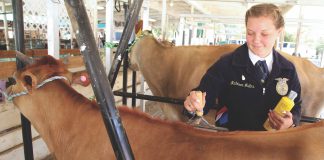Back in three successive Pajaronian columns (July 1, Aug. 5 and Sept. 2), I laid out the convoluted story of how a group of Yankee (white) residents in and around Santa Cruz seceded from Monterey County and the two were born side-by-side in 1850.
Monterey was the Old Capital steeped in the traditions of Mexico, while Santa Cruz was composed mostly of immigrants from the United States who built a town resembling the ones they had left.
The one major thing that Mariano Vallejo denied the upstart little county was to have the entire Pajaro Valley included within its boundaries. I believe the entire affair was driven by racism, and you can go back to those columns and see my reasoning.
Two towns grew up at the major river crossing, Watsonville on the north and tiny Pajaro on the south. Watsonville achieved enough population and oomph to incorporate in 1868, while Pajaro remained tiny and rural.
The Vallejo family originally owned much of the south side of the valley (which I believe was why the General kept it in Monterey County) and eventually most of it was owned by John T. Porter. As we saw in my most recent columns (March 10), Watsonville’s Chinese community was invited to move over beside the Porter mansion in the summer of 1888 in anticipation of the opening of the huge Spreckels sugar mill in 1888 in Watsonville.
In most years, the Pajaro River swelled up and flowed into the land adjacent to the river. There were no efforts to control these flood events.
Watsonville floods were measured by how far the water flowed up Main Street, with the Plaza being the measure of a wet year. You can still see the general building style in south Watsonville, with a half-story given to a basement and steps leading up to the main floor of the house. Each house usually had a rowboat to use when the river came up and surrounded the house.
Over in Pajaro, John T. Porter also built the houses that he rented to the Chinese with the river in mind. The buildings were two-story, and narrow. And when the river came to visit, the Chinese moved all their valuables, or stores up to the second story and waited until the water receded before moving back downstairs.
We don’t know for certain who named the Pajaro Chinatown Brooklyn, but the explanation given by everyone including the Porter family, is that just as Manhattan was connected to poorer, multi-ethnic Brooklyn by a bridge, so too was Watsonville connected to Pajaro’s Chinatown. One of Pajaro’s main streets still bears the name Brooklyn.
Brooklyn’s Chinese population was predominantly male and it fluctuated with the seasons as the sugar beet workers spent winters elsewhere. In 1882 Congress passed the Chinese Exclusion Act which prohibited new Chinese immigrants from coming to the U.S. The law also declared Chinese ineligible from becoming naturalized American citizens. The only way a Chinese could become a U.S. citizen was to be born in this country, and with so few Chinese women here, the odds of U.S. citizenship were poor.
Brooklyn Chinatown became a service community for a male-dominated population, with the attendant recreations of prostitution, opium and gambling. During its 20 years of being located in downtown Watsonville, city leaders periodically went through unsuccessful (and half-hearted) efforts to “clean up” Chinatown. But, when Chinatown moved across the river, it also moved out of the jurisdiction of the city and Watsonville could decry the existence of the activities, but shrugged when they could do nothing about them. And the thumping of their boots on the bridge echoed through the nights.
Monterey County made few efforts to control the activities in Brooklyn. The Pajaro River was far away from the county’s first county seat in Monterey and got no closer when it moved to Salinas in 1873.
Spreckels kept his beet sugar mill in Watsonville for a decade (1888-1898) and the Chinese laborers provided the muscle and dependability to transform Watsonville into Sugar City. The professional baseball team was named the “Sugar Beets.” When the U.S. suffered its worst economic depression in the 1890s, Watsonville thrived, as did its dependency on available dependable agricultural labor.
The era of Brooklyn Chinatown just across the river established the symbiotic relationship between Pajaro and Watsonville. Watsonville provided goods, services and employment to the people while the “other side of the river” provided recreation and dependable labor.
The next column will highlight the attempts to finally contain the springtime river flooding, and how Vallejo’s line-down-the-river has made it difficult.
Sandy Lydon has taught Asian, Asian-American and regional history at Cabrillo College since 1968. He has resumed, post-Covid, lecturing and teaching throughout the region.












A friend sent me the link to this very interesting article. We grew up in Watsonville together – WHS class of 1967. Is there some way for me to fine the other columns you mention – (July 1, Aug. 5 and Sept. 2)? This information is so interesting.
https://pajaronian.com/?s=SANDY+LYDON